Table of Contents
The term brand language is one of those we’ve probably all heard at some point, but never really discussed in great detail. Any brand must have a strong brand language. Defining your brand and differentiating it from the competition can be done with it. In addition to ensuring consistency, defining brand language can be helpful to all of us. Although it seems straightforward on paper, how do you define and create your brand marketing language?
What is Brand Language?
A brand’s language is the words, logos and images used to describe its purpose, tone, and products. It is important to note that there are a variety of techniques and strategies when it comes to brand language. First of all, you need a logo. With many online logo maker websites, you can find the perfect logo style, font, icon and color combination for your business or personal brand. Start with the basics. Some are obvious, but others aren’t. You need to ask two major questions when defining brand language:
Who is Your Audience?
To define a brand’s voice, every brand must ask this question. A brand identity is impossible without an audience. As we discussed different brand identity strategies and techniques, let’s take a look back at them. Several methods have proven successful in finding your audience.
User Personas
When it comes to understanding who uses their products or services, many brands use user personas, also known as buyer personas. Unlike most chat bots, this process is a little more involved. Surveys and interviews create these personas by asking users questions and looking for patterns.
Once you have conducted sufficient interviews and surveys with your audience, you can create personas. There is no special skill or knowledge required to complete it, nor is it difficult in any way. Your audience size will determine how long it takes. During this time, having a few analytics tools handy is extremely useful.
Talk to Them
You can most easily and effectively do this by understanding your audience. All you have to do is one thing. Contacting your audience via email, phone, or face-to-face interactions is the best way to understand them. Customers have benefits when you listen to them. Listening to your customers can help you improve the quality of your brand. Your customer relations will improve if you follow this practice. Getting involved with a brand is something everyone likes.
What Does Your Brand Stand for?
Understanding your brand’s values is essential to understanding its language. There is a specific image that every brand strives to portray on the market today (or should strive to portray).
Defining your brand voice can be as simple as answering the following questions:
What is Your Brand’s Culture?
There is a culture behind every brand. Both business language and brand culture contribute to the definition of a brand. The cultural approach is more direct, however. Imagine a brand as having a DNA and a language that describes the brand. As a brand, we put out vibes into the world through our brand language. Alternatively, you could say that it is a way of speaking.
Both of these topics overlap quite a bit. It is essential to define your brand culture before defining your brand language. How can we accomplish this? Your brand must first define its values, its people, and its purpose. Identify your brand’s values. All that is left is to display that to everyone. You will also have a clear culture if these values are clear.
What is the Mission Of Your Brand?
As much as this question ties into the one above, it is extremely important by itself, so it deserves its spot. It is essential for all brands, regardless of industry, to have a mission. No matter if you sell quality shoes or educate people on green energy, your efforts are valuable. Determining your brand’s language depends on highlighting your mission.

Ihsan Sharif is a talented writer known for his engaging articles on linguistic topics. With a keen eye for detail and a passion for language, Ihsan brings complex linguistic concepts to life, making them accessible and interesting to a wide audience.




